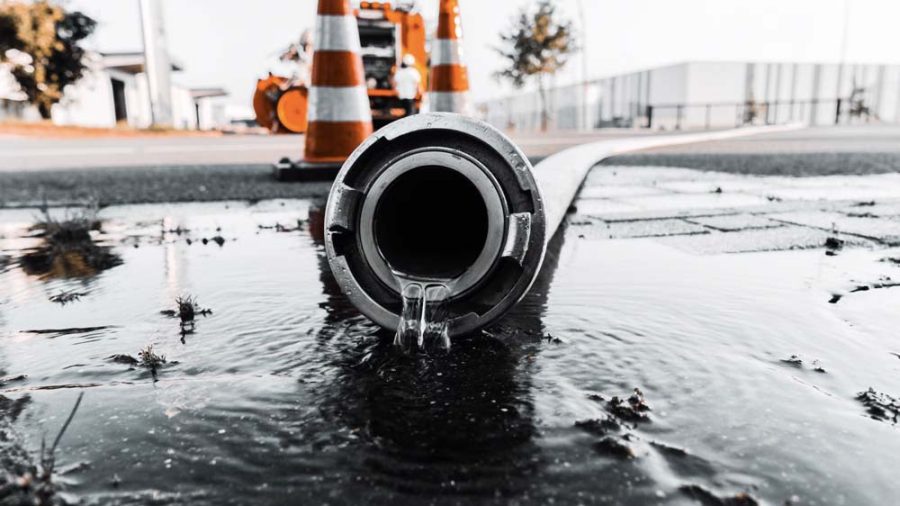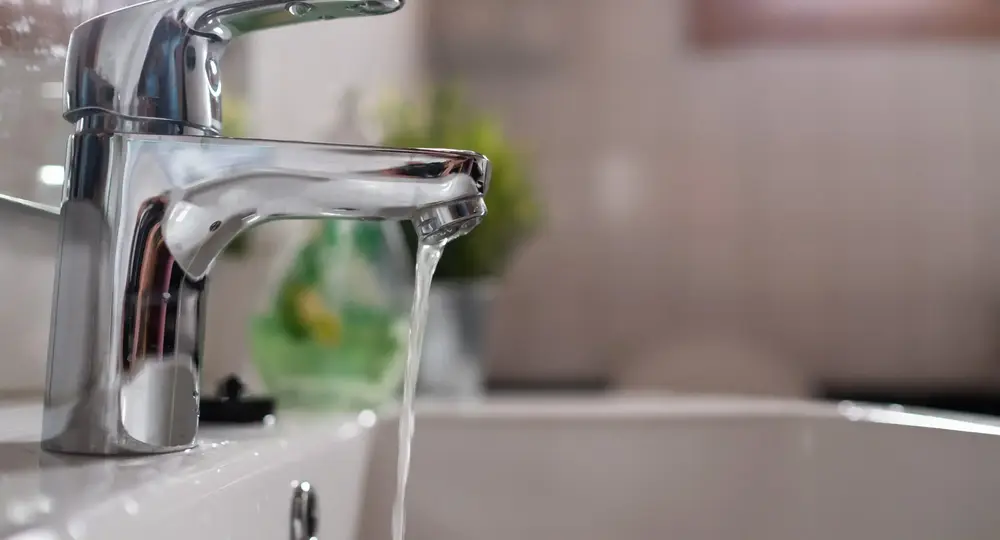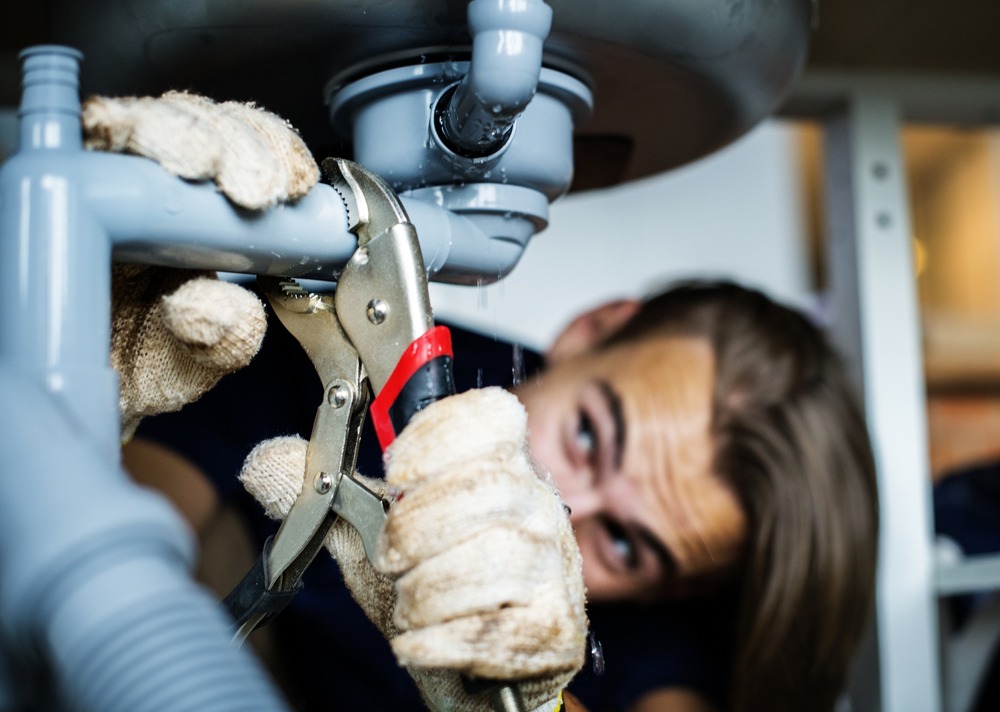Aging plumbing systems in old homes can present unique challenges that only skilled plumbers can solve. From hidden rusted pipes to outdated septic systems, these issues often go unnoticed until they cause significant disruptions. Fortunately, experienced plumbers have the tools and skills to deal with plumbing problems while preserving the integrity of old properties.
Here are six unusual plumbing problems in old homes and the solutions plumbers near me in Watertown, CT, use to address them.
Table of Contents
Key Takeaways
✔ Rusted pipes hidden behind walls in old homes require advanced tools and careful wall removal to replace outdated materials. ✔ Tree roots frequently invade older sewer lines, causing backflow that plumbers resolve with inspections, root removal, and preventive upgrades. ✔ Lead pipes in historic homes pose health risks, which plumbers address by testing water quality and replacing hazardous components. ✔ Improvised basement plumbing systems often fail to meet modern codes, necessitating professional inspections and upgrades. ✔ Settling foundations misalign old drainage systems, which plumbers repair by realigning pipes and using flexible materials to prevent recurring issues. ✔ Consulting professional plumbers preserves a home’s character while providing solutions tailored to outdated plumbing systems. ✔ Experienced plumbers bring specialized tools, code knowledge, and a restoration-first approach to resolve the unique challenges of old home plumbing. |

1. Rusted Pipes Hidden Behind Original Walls
Old homes often hide rusted iron or galvanized steel pipes behind plaster walls, creating unseen hazards. Over time, these materials corrode, leading to leaks, reduced water pressure, and discoloration. Leaks are one of the most common plumbing issues, and they can cause significant damage and can result in high water bills if not addressed promptly.
Why Rusted Pipes are Common in Old Homes
- Aging Materials: Iron and galvanized steel pipes were standard in early plumbing but they can deteriorate with prolonged water exposure. As rust forms, it weakens the pipes and causes leaks that go unnoticed behind thick plaster or lath walls.
- Limited Access: Older homes were built with aesthetic priorities, making plumbing systems hard to reach. Decorative walls, often with intricate details, complicate the process of locating and repairing hidden pipes.
- Unseen Symptoms: Rust buildup can cause subtle changes, such as water discoloration or fluctuating pressure, that homeowners might not immediately associate with pipe corrosion.
How Plumbers Solve Rusted Pipe Issues
- Leak Detection Tools: Plumbers use advanced devices like acoustic sensors and infrared cameras to pinpoint pipe leaks without excessive damage. These tools provide accurate results, allowing precise repairs.
- Careful Wall Removal: To minimize structural impact, plumbers carefully remove only the sections of the wall necessary to access the corroded pipes. This preserves the home’s original features while enabling pipe replacement.
- Material Upgrades: Rusted pipes are replaced with modern materials like PEX or copper, which resist corrosion and provide better durability. These updates ensure long-term reliability and compliance with current plumbing standards.
2. Sewage Backflow Caused by Tree Roots
Tree roots can invade underground sewer lines in old homes, causing sewage backflow that disrupts plumbing systems. This issue is especially common in older properties with clay or cast-iron pipes that deteriorate over time. Plumbers near me in Watertown, CT, often need to resolve these blockages quickly to prevent further damage.
Why Tree Roots Cause Backflow
- Moisture Attraction: Tree roots naturally grow toward sewer lines because of the moisture they contain. Over time, roots penetrate cracks in older pipes, creating blockages that prevent wastewater from flowing freely.
- Weak Materials: Clay and cast-iron pipes used in older homes are more likely to crack or develop weak points. These materials degrade over decades, providing easy entry points for root intrusion.
- Blockage Escalation: Once roots enter a sewer line, they expand and catch debris, leading to complete obstructions. This can result in sewage backing up into the home, which can pose health risks that require urgent repairs.
How Plumbers Resolve Tree Root Intrusions
- Pipe Inspections: Plumbers use video cameras to inspect the sewer lines and identify the extent of root intrusion. This allows them to determine the most effective method of clearing the blockage.
- Root Removal: Specialized tools like hydro jetting or root saws are used to clear roots from pipes without causing further damage. These tools eliminate obstructions while protecting the integrity of the sewer line.
- Preventive Upgrades: Plumbers often recommend replacing old sewer lines with root-resistant materials like PVC. This reduces the risk of future intrusions and ensures a reliable plumbing system in the long run.
3. Lead Pipes Disguised as Historical Fixtures
Lead pipes, often mistaken for original fixtures in old homes, pose significant health risks. Although lead pipes were banned in 1986, an estimated 6 to 10 million lead service lines from decades past remain in use today. Homeowners may overlook these pipes in favor of preserving the home’s vintage aesthetic. Plumbers frequently uncover these hidden hazards and recommend modern, safe alternatives.
Why Lead Pipes Remain in Old Homes
- Common Usage: Lead was a standard material for plumbing in homes built before the 1950s due to its flexibility. However, its toxic properties were not widely understood at the time.
- Aesthetic Preservation: Homeowners sometimes prioritize retaining original hardware, unaware that some fixtures are connected to lead plumbing.
- Health Risks: Lead leaches into water over time, which creates significant health concerns. Even small amounts of lead in drinking water can cause severe long-term effects.
How Plumbers Replace Lead Pipes
- Water Testing: Plumbers test water quality to confirm lead contamination. These tests identify unsafe levels and provide a clear plan for remediation.
- Targeted Replacements: Only the lead components are replaced to ensure minimal disruption to the home’s appearance. Plumbers often use copper or PVC pipes that blend seamlessly with existing systems.
- Safe Integration: Plumbers ensure replacement pipes are properly connected using dielectric unions or brass fittings to prevent galvanic corrosion between different metals. Additionally, they apply thread sealant and use compression joints to create watertight seals.
4. Improvised Plumbing Systems in Basement Additions
Basement plumbing in older homes is often an afterthought, added long after the property was built. Many of these systems were installed by unlicensed individuals, often resulting in leaks, poor drainage, and code violations. Plumbers frequently encounter these makeshift setups and modernize them to ensure functionality and compliance.
Why Improvised Plumbing Systems Cause Problems
- DIY Installations: Early homeowners often added plumbing themselves to save money. These systems lack the proper materials and techniques used in professional installations.
- Poor Venting: Inadequate venting in makeshift systems leads to slow drainage and sewer gas buildup. Old homes with DIY plumbing often neglect this critical design aspect.
- Code Non-Compliance: Improvised setups usually fail to meet modern building codes. These violations can lead to fines, inefficiency, and dangerous conditions.
How Plumbers Fix Improvised Basement Systems
- System Assessment: Plumbers inspect the entire basement setup to identify weak points, such as incorrect pipe slopes or venting issues.
- Code Upgrades: Plumbers bring systems up to current building codes, correcting deficiencies like improper connections and venting.
- Seamless Integration: New plumbing installations are connected using transition couplings or flexible connectors to accommodate varying pipe materials and sizes, ensuring optimal water flow and long-term reliability.
5. Misaligned Drainage Systems from Settling Foundations
Old homes with shifting foundations often develop misaligned drainage systems that lead to leaks and blockages. Foundation settling, a common issue in aging properties, can disrupt the alignment of underground pipes. Plumbers address these structural challenges to restore proper drainage.
Why Settling Foundations Impact Plumbing
- Soil Shifts: Decades of soil movement cause the foundations of old homes to settle unevenly. This movement misaligns rigid drainage pipes, which creates leaks or cracks.
- Pipe Damage: Drainage systems made of brittle materials, such as clay or cast iron, cannot adapt to shifting foundations. These materials are prone to breaking under pressure, which can cause extensive plumbing damage.
- Recurring Blockages: Misaligned pipes create dips or breaks that trap debris, leading to frequent clogs and backflow. Without correction, these issues persist over time.
How Plumbers Fix Misaligned Drainage Systems
- Pipe Realignment: Plumbers use trenchless methods, such as pipe bursting or relining, to repair and realign underground drainage systems without extensive digging.
- Materials Upgrade: Old pipes are replaced with flexible options like PVC or HDPE, which can adapt to future foundation shifts. These materials reduce the likelihood of recurring misalignment.
- Foundation Stabilization : In some cases, plumbers work alongside structural experts to stabilize the home’s foundation by using techniques like underpinning, mudjacking, or piering to correct shifts and prevent further structural damage.

6. Low Water Pressure from Aging Supply Lines
Old homes often suffer from low water pressure due to aging supply lines that have deteriorated over time. This issue can affect essential tasks like bathing, cooking, and cleaning, making it important for plumbers to identify and resolve the underlying causes.
Why Low Water Pressure Occurs in Old Homes
- Corroded Interior Walls: Over the decades, pipes made from galvanized steel develop internal corrosion, narrowing the passage for water flow. This corrosion leads to reduced pressure and can eventually cause leaks if left unaddressed.
- Outdated Valves and Fittings: Older supply systems may include outdated shut-off valves and fittings that don’t operate efficiently. These components may partially close or clog, restricting water flow even when pipes are intact.
- Partial Pipe Collapses: Supply lines that have settled due to foundation shifts may partially collapse or kink, impeding water flow. These deformities create bottlenecks that reduce pressure throughout the plumbing system.
How Plumbers Restore Water Pressure
- Replacing Outdated Valves: Plumbers replace old, inefficient valves and fittings with modern alternatives that ensure smooth water flow. These updates can significantly improve pressure without replacing entire pipes.
- Pipe Relining: In cases where full replacement isn’t feasible, plumbers can apply epoxy lining inside old pipes. This process seals corrosion and restores the interior diameter, improving water flow.
- Upgrading Supply Lines: Plumbers replace aging pipes with modern materials like copper or PEX, which provide better durability and pressure capacity. These upgrades ensure the system meets modern water usage demands.
How to Choose the Right Plumbers for Old Homes
Selecting the right plumbers for old homes is essential to preserving the character of these historic structures while addressing their unique plumbing challenges. With the U.S. plumbing industry valued at $124.2 billion, experienced professionals are equipped with the knowledge and tools needed to maintain the integrity of aging properties.
Historic homes often require specialized knowledge, advanced tools, and a deep understanding of outdated systems. Homeowners can use the following tips to identify the best plumbers for the job:
1. Look for Experience with Historic Properties
Plumbers near me in Watertown, CT, with a proven track record of working on old homes are better equipped to handle their unique plumbing systems. These professionals understand how to navigate outdated materials like lead or cast iron while preserving the original structures.
2. Verify Licensing and Certifications
Licensed plumbers demonstrate that they meet the necessary qualifications to perform complex plumbing work safely and effectively. Certifications in advanced techniques, such as trenchless pipe repair or leak detection, are valuable for tackling the challenges of old homes. Checking for proper credentials also ensures the plumber is skilled and compliant with local regulations.
3. Ask About Specialized Tools and Techniques
Older homes often require non-invasive methods to diagnose and fix plumbing issues. Plumbers who use advanced tools like video cameras, acoustic sensors, and hydro jetting can resolve problems efficiently while minimizing damage to walls or floors. Access to modern technology is a sign of a plumber that uses cutting-edge solutions to address issues.
4. Check Reviews and References
Reviews and references provide valuable insights into a plumber’s ability to work on old homes. Look for testimonials that mention successful repairs in similar historic properties. Speaking with previous clients or checking before-and-after photos can also help gauge the plumber’s expertise and reliability.
5. Explore Comprehensive Services
Plumbers for old homes should offer a range of services, from pipe replacement to system upgrades, to meet the complex needs of historic properties. Comprehensive service ensures the plumber can address unexpected issues, such as foundation settling or rusted pipes, without the need to hire additional contractors.
7. Confirm Knowledge of Local Building Codes
Old homes often require plumbing updates to comply with modern building codes while retaining their historical integrity. Plumbers familiar with local regulations can ensure all repairs and replacements meet legal standards. This is especially critical when dealing with septic systems, drainage, or major pipe replacements, as non-compliance can lead to costly fines or future issues.
Frequently Asked Question (FAQs)
What are the common signs of plumbing issues in old homes?
Plumbing problems in old homes often reveal themselves through symptoms like low water pressure, discolored water, or frequent clogs. Unusual sounds, such as banging or gurgling in pipes, can indicate underlying issues like sediment buildup or misaligned drainage. Water stains or damp spots on walls and ceilings may signal hidden leaks. These signs should be addressed promptly by experienced plumbers to prevent further damage.
How can homeowners maintain plumbing systems in old homes?
Regular inspections by licensed plumbers are crucial for maintaining plumbing in old homes. Simple actions like checking for leaks, cleaning drains, and testing water pressure can help identify minor issues before they escalate. Installing modern filtration systems can also protect older pipes from corrosion caused by hard water. Maintenance ensures that the plumbing system remains functional while preserving the home’s historic charm.
Are insurance policies affected by plumbing systems in old homes?
Insurance companies may have stricter requirements for old homes with outdated plumbing systems. Homes with lead, galvanized steel, or clay pipes may face higher premiums or coverage exclusions unless upgrades are made. Plumbers can provide documentation of repairs or replacements to help homeowners secure better insurance terms.
Can old plumbing systems handle modern water usage demands?
Many old plumbing systems were not designed to accommodate the water demands of modern appliances and fixtures. Low-flow toilets, dishwashers, and washing machines can strain older pipes, leading to leaks or backups. Upgrading key components, like supply lines and drainage systems, ensures compatibility with contemporary water usage. Consulting plumbers for system assessments can help identify areas that need reinforcement.
How do plumbers determine if pipes in an old home need replacement?
Plumbers assess pipes by evaluating their material, age, and visible signs of damage, such as corrosion, leaks, or weak joints. Advanced tools like video cameras allow them to inspect the condition of pipes hidden behind walls or underground. Testing water quality for contaminants like lead can also indicate the need for replacement.
Trust L&P Plumbing in Watertown, CT, for Expert Plumbers
For reliable and skilled plumbers in Watertown, CT, L&P Plumbing specializes in preserving the integrity of older homes while addressing their unique plumbing challenges. With a commitment to quality craftsmanship and an in-depth understanding of historical and modern plumbing systems, our team ensures durable, efficient solutions that respect the character of your property.
Contact us today to schedule a consultation and protect the legacy of your historic property!

